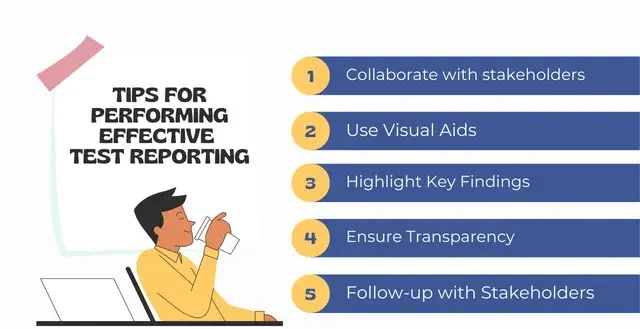Imagine a theatre performance. The actors rehearse tirelessly, the director ensures each scene flows perfectly, and behind the curtain, every light cue and prop placement is meticulously planned. But when opening night arrives, it’s not enough that the team did the work — the audience must understand the story.
In software testing, this is the essence of reporting test status. You can test tirelessly, fix defects, and validate performance, but without clear communication of findings to management, the true value of your work remains hidden behind the curtain.
Turning Data into a Narrative
Test reports are not just spreadsheets filled with numbers or bug counts; they are stories about product quality, progress, and risks. When you’re reporting, you’re acting as both narrator and interpreter — turning raw testing data into a narrative that decision-makers can understand.
Management doesn’t want every technical detail. What they need is context — the “so what” behind the data. For example, instead of stating, “Twelve critical defects remain open,” you might say, “Twelve critical issues are delaying deployment by one week, but six are already in resolution testing.”
Testers who understand this balance can transform a dry update into actionable insight — a skill often honed in structured learning environments such as software testing coaching in Chennai, where emphasis is placed on clarity, stakeholder alignment, and communication strategy.
Speaking Management’s Language
One of the biggest mistakes testers make is assuming that management understands the technical jargon of testing metrics. Executives think in terms of risk, cost, and timelines, not test cases or coverage ratios.
To bridge this gap, testers must tailor their communication to the audience. Replace terminology like “regression suite execution” with “verifying that previous features still work after recent updates.” When presenting to stakeholders, visual summaries — dashboards, pie charts, or trend graphs — often speak louder than words.
Transparency is equally important. Reporting only positive outcomes creates blind spots. Management values testers who present the complete picture — highlighting risks with honesty and suggesting mitigation strategies.
Structuring the Report for Maximum Clarity
A good test report follows a structure that mirrors an executive briefing — concise, purposeful, and easy to digest.
- Summary: Begin with an overview of what’s been tested, what remains, and the overall product health.
- Highlights: Mention milestones achieved, like the successful completion of high-priority test cycles.
- Risks and Issues: Identify bottlenecks — unresolved defects, resource constraints, or test environment challenges.
- Recommendations: Offer solutions rather than just listing problems. Suggest where the focus should shift next.
Using visual elements such as trend lines and progress indicators can make even complex data intuitive. These visual cues tell the story at a glance — critical in time-pressed management meetings.
Building Trust Through Consistency
Consistency is key to effective test communication. Whether weekly, sprint-based, or milestone-driven, maintaining a regular reporting cadence ensures that management stays informed and confident in the testing process.
Moreover, consistency in format and terminology creates predictability, allowing leaders to compare progress over time. If your previous reports focused on defect density and coverage, keep those metrics consistent in future updates.
In professional training environments, aspiring testers often engage in real-world scenarios where the consistency and credibility of reporting directly influence managerial decisions. Learning to standardise updates fosters professional reliability — a hallmark of strong testers.
Aligning Reports with Business Objectives
The most effective reports connect testing outcomes with business goals. This means showing how your findings affect product launch timelines, user satisfaction, and ROI. For instance:
- Instead of stating “50 test cases failed,” frame it as, “Key checkout features failed under high load, potentially affecting 20% of projected transactions.”
- Rather than “Automation suite incomplete,” say, “Delayed automation may extend release testing by two sprints.”
By linking test results to business impact, you elevate testing from a quality gate to a strategic enabler. Management begins to view the QA team not just as problem-finders but as risk mitigators and value protectors.
Conclusion
Effective test reporting is not about the length of your document — it’s about the clarity of your message. It’s about ensuring that your work informs decisions, not just records effort.
Think of every report as a bridge connecting your technical reality with the strategic priorities of your organisation. When you report well, management doesn’t just see the product’s current state — they understand its readiness, risks, and potential.
A well-trained tester knows that communication is as vital as execution. For professionals aspiring to reach that level, structured learning in areas like software testing coaching in Chennai can help develop the ability to blend technical precision with storytelling — ensuring that every test report drives action, not confusion.
In testing, clarity is the ultimate proof of confidence — and a good report is how you make that confidence visible.



